Section 433 BNSS : Procedure When High Court Judges Are Divided Explained
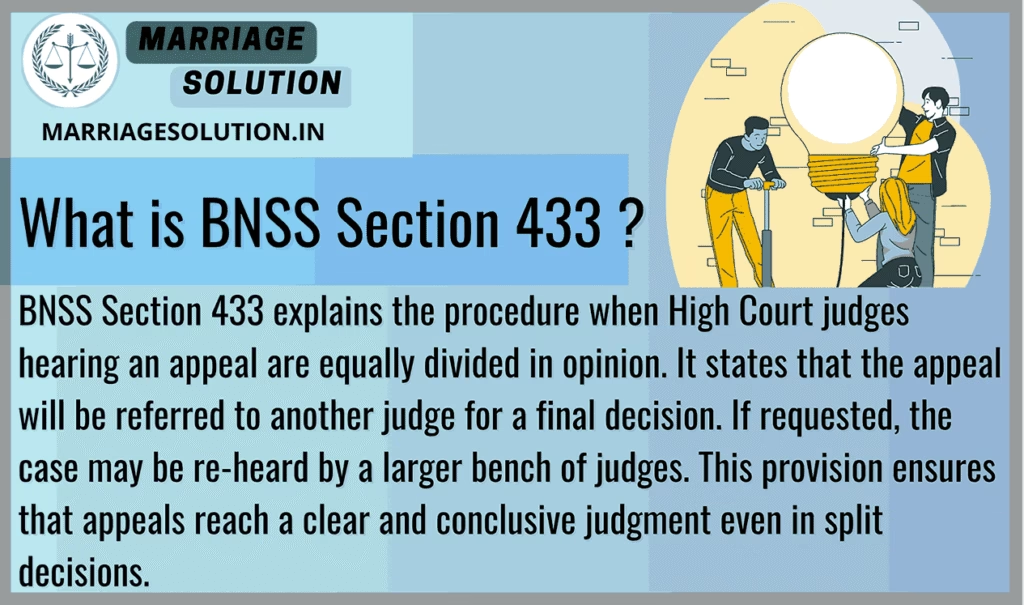
Section 433 BNSS : Outlines the procedure for resolving appeals where High Court judges are equally divided. It allows referral to another judge or re-hearing by a larger bench, ensuring fairness and finality in appellate decisions.
Section 432 BNSS : Power of Appellate Courts to Take Additional Evidence Explained
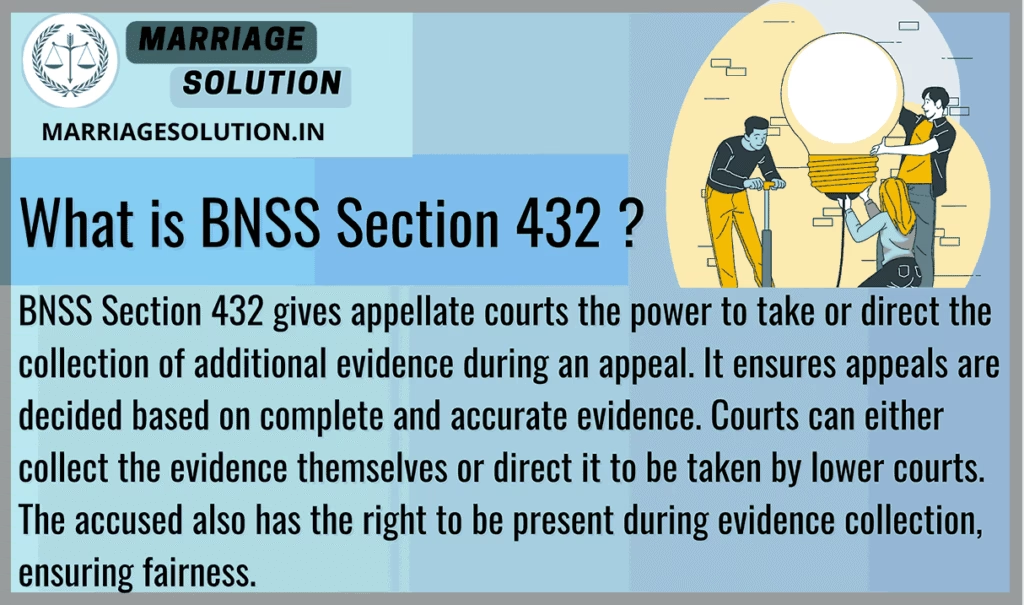
Section 432 BNSS: Appellate courts to collect or direct additional evidence, ensuring fair appeals. It includes certification procedures, accused rights, and adherence to inquiry rules for judicial fairness.
Section 431 BNSS : Arrest of Accused in Appeals Against Acquittal Explained

Section 431 BNSS : High Court to arrest an accused in appeals against acquittal under Section 419, ensuring their presence during proceedings while providing bail provisions for fairness.
Section 430 BNSS : Suspension of Sentence Pending Appeal and Bail Explained
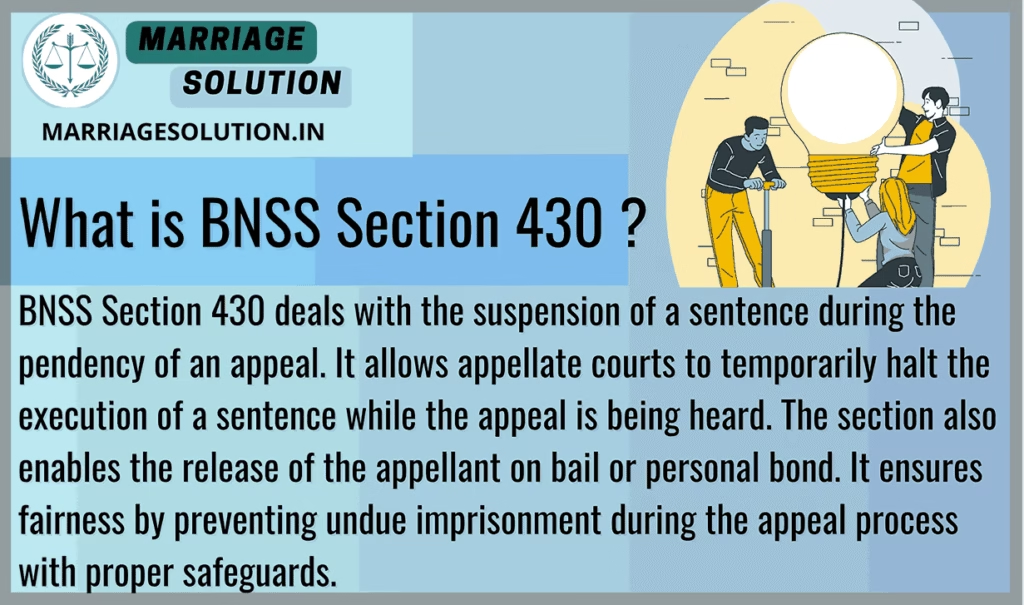
Section 430 BNSS explains the suspension of sentence during appeals and bail provisions. It balances the rights of appellants with public safety by including mandatory safeguards, automatic bail for minor cases, and proper judicial oversight.
Section 429 BNSS : High Court Order Certification to Lower Courts Explained .
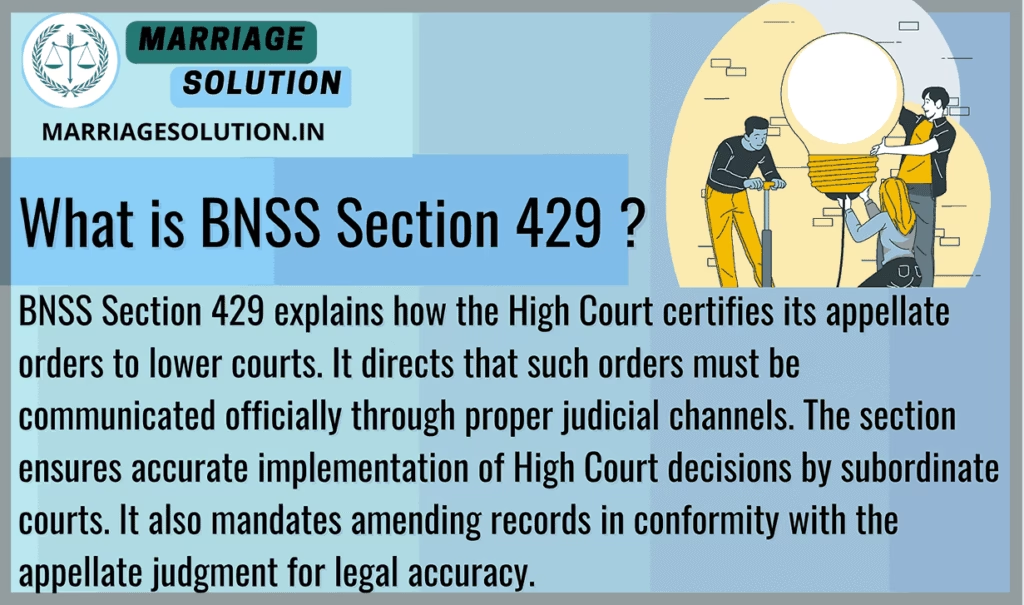
Section 429 BNSS provides the procedure for certifying High Court appellate orders to lower courts through CJM or District Magistrate, ensuring compliance and record updates for effective justice delivery.
Section 428 BNSS : Understanding Judgments of Lower Appellate Courts .
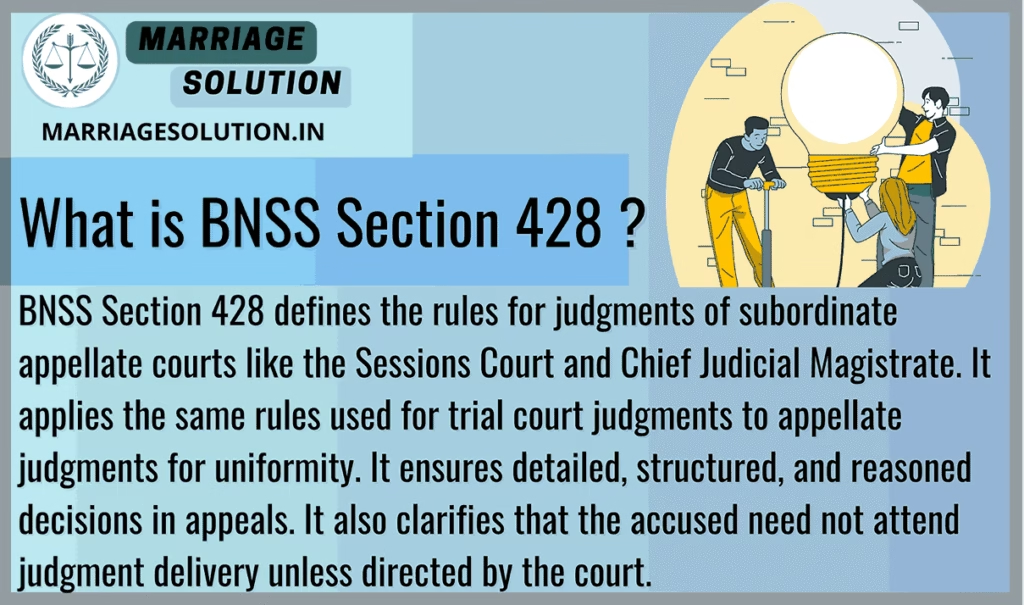
Section 428 BNSS ensures that appellate judgments follow trial court rules, maintaining consistency, transparency, and efficiency while removing the mandatory attendance of the accused.
Section 427 BNSS : Powers of the Appellate Court Explained
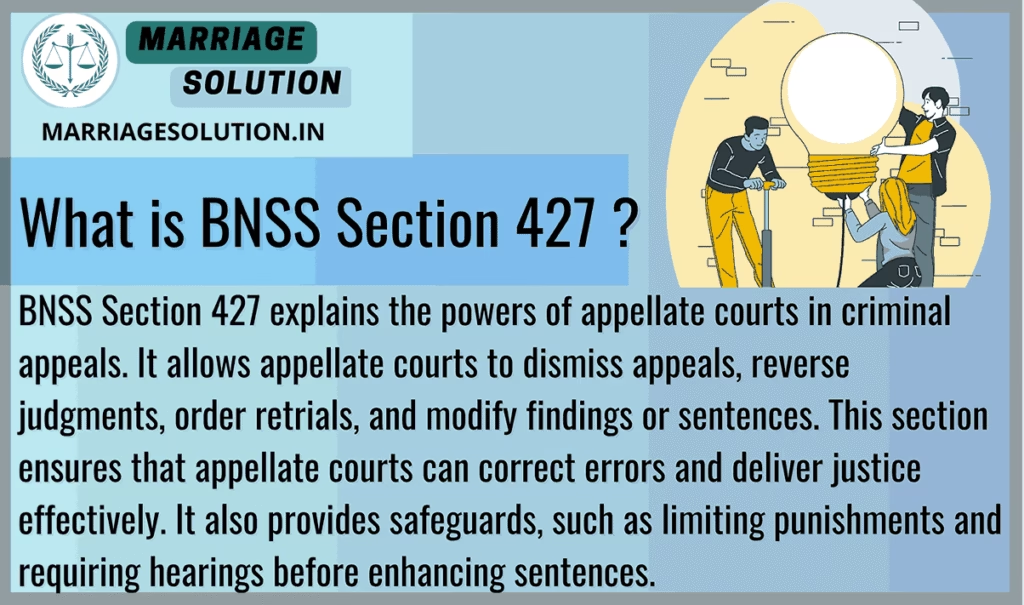
Section 427 BNSS grants appellate courts authority to dismiss appeals, reverse acquittals, alter convictions, modify sentences, and issue consequential orders while ensuring fairness and legal safeguards.
